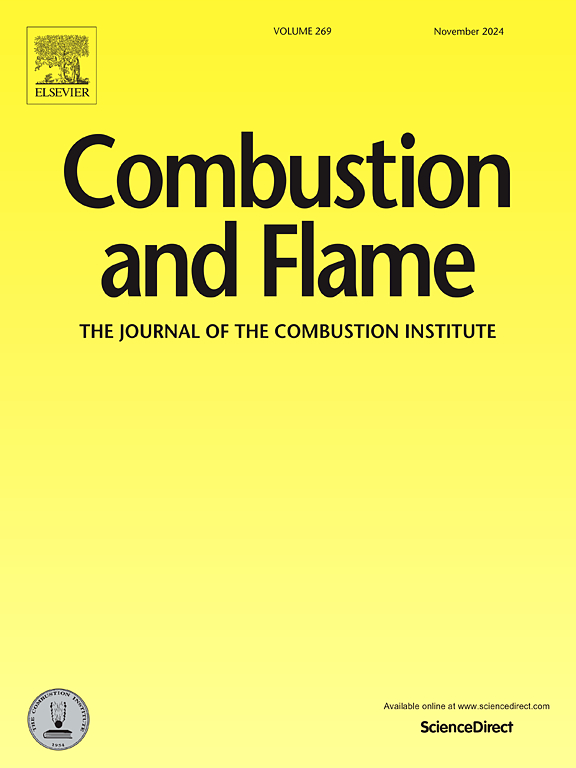A computational investigation of pressure effects on soot formation in counterflow diffusion flames of methane in MILD conditions
IF 5.8
2区 工程技术
Q2 ENERGY & FUELS
引用次数: 0
Abstract
Moderate or Intense Low-oxygen Dilution (MILD) combustion has been extensively studied as a promising technology to achieve high efficiency and low-emission power generation. The present study numerically investigates the soot formation in non-premixed methane-air flames in MILD conditions at elevated pressures of up to 20 atm. The soot formations under MILD conditions are compared with their conventional counterparts to elucidate the underlying physical and chemical pathways affecting the sooting features. The gas-phase kinetic mechanism is a reduced version of KAUST Aramco PAH Mech 1.0, which has been validated for C1 and C2 fuels for the prediction of PAHs (polycyclic aromatic hydrocarbons) species up to coronene (C24H12). A sectional method is used for the soot-aerosol model. The soot formation (SF) flame, with a high strain rate under conventional and MILD combustion conditions, is employed for the investigation. An improved consistent soot model comprising a broad range of precursors from A2 (naphthalene) to A7 (coronene) is used for the analysis. The results show that MILD combustion produces an extremely low soot compared to its conventional counterparts at high pressures. The inception rate has a larger contribution towards the overall soot mass growth rate when compared with the HACA rate and condensation rate in MILD conditions. Conversely, the HACA rate is higher than the inception and condensation rates in conventional conditions, suggesting that the soot mass growth rate is HACA rate-oriented. The soot volume fraction and particle number density increase with pressure, and their peak values are positioned near the oxidizer side of the stagnation plane for both conventional and MILD conditions. A rise in pressure increases the major precursors for soot formation, such as benzene (A1), naphthalene (A2), pyrene (A4), and coronene (A7) in both conventional and MILD conditions. It also enhances the inception, HACA, condensation, and oxidation rates for soot.
求助全文
约1分钟内获得全文
求助全文
来源期刊

Combustion and Flame
工程技术-工程:化工
CiteScore
9.50
自引率
20.50%
发文量
631
审稿时长
3.8 months
期刊介绍:
The mission of the journal is to publish high quality work from experimental, theoretical, and computational investigations on the fundamentals of combustion phenomena and closely allied matters. While submissions in all pertinent areas are welcomed, past and recent focus of the journal has been on:
Development and validation of reaction kinetics, reduction of reaction mechanisms and modeling of combustion systems, including:
Conventional, alternative and surrogate fuels;
Pollutants;
Particulate and aerosol formation and abatement;
Heterogeneous processes.
Experimental, theoretical, and computational studies of laminar and turbulent combustion phenomena, including:
Premixed and non-premixed flames;
Ignition and extinction phenomena;
Flame propagation;
Flame structure;
Instabilities and swirl;
Flame spread;
Multi-phase reactants.
Advances in diagnostic and computational methods in combustion, including:
Measurement and simulation of scalar and vector properties;
Novel techniques;
State-of-the art applications.
Fundamental investigations of combustion technologies and systems, including:
Internal combustion engines;
Gas turbines;
Small- and large-scale stationary combustion and power generation;
Catalytic combustion;
Combustion synthesis;
Combustion under extreme conditions;
New concepts.
 求助内容:
求助内容: 应助结果提醒方式:
应助结果提醒方式:


